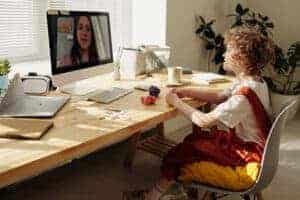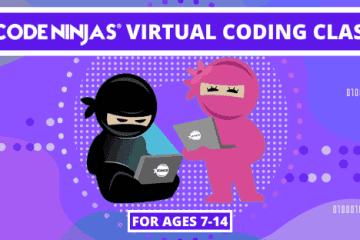

Due to the Coronavirus global pandemic, lots of schools do not have an option for kids to attend class in person. As a result, kids are now attending school virtually. This new style of virtual learning has been a steep learning curve for everyone – teachers and kids alike have had to learn how to adapt to it.
And then there are us parents. We are trying to ensure our kids are not left behind.
While older kids may not want you interfering, younger kids are likely to need some guidance when it comes to creating the right virtual learning environment. If the right measures aren’t taken, your kids may struggle. They may not be able to concentrate or may lack the motivation to learn. Below are just some of the ways in which you can help create a successful virtual learning environment.



The Right Tools
Firstly, you need to be certain that your kids have all the right tools. These include: A computer: Learning virtually is going to be very tricky without a computer. If your kids don’t have their own computer, you may want to consider buying them one. A basic laptop may be all that’s necessary – you can find many cheap options online. Laptop rental is another option for those parents that can’t afford the upfront costs of a new laptop. There may even be places to get access to free laptops (many schools in Broward County were able to distribute free laptops at the beginning of the pandemic – if this isn’t an option there may be other ways to acquire a free laptop as listed at Grant Supporter). The right software: It’s important you also have the right software. Some schools have been recommending free software like Zoom, while others may even have their own applications. Check with your child or their teacher to determine which software they need. A strong wi-fi connection: Without a good wi-fi connection kids will find it hard to attend meetings or access online tools. Upgrading your wi-fi could be necessary if it is currently shaky. You may be able to buy tools such as wi-fi extender if your home’s wi-fi experience has limited range. Microphone and/or webcam: Most modern laptops already have basic microphones and webcams built in. If you child’s laptop doesn’t or you simply feel they could benefit from better equipment, you could also consider investing in a microphone and webcam. Headphones: If your child does not have a dedicated space for their learning environment, a pair of headphones will be beneficial in helping to block out background noise. Blue Light Filtering Glasses Are NOT Needed: Reference the Eye Care Section For additional Details. Regular school supplies: Certain work may still be done offline and will likely require regular school equipment. The school is likely to supply a list of the equipment you need. Depending upon your child’s age, but could include:- Pen
- Pencil
- Notebooks
- Ruler
- Pencil sharpener
- Eraser
- Protractor
- Compass
- Calculator
Eye Care
Blue light filtering glasses Are Not Needed: It is understood that Blue light filtering glasses are becoming quite popular. Blue light filtering glasses filter out the blue light from computers and other electronic glasses. According to a study by the National Library of Medicine, there is no measurable UVA or UVB radiation from TVs, Tablets or Computer Monitors. The discomfort some people feel after using computer technology is typically eye strain. Staring at computers for extended periods of time cause eye strain. Eye strain is not caused by technology. To avoid or alleviate eye strain, the American Academy of Opthalmology recommends the following:- Sit about 25 inches (arm’s length) from the computer screen. Position the screen so you are gazing slightly downward.
- Reduce screen glare by using a matte screen filter if needed.
- Take regular breaks using the “20-20-20” rule: every 20 minutes, shift your eyes to look at an object at least 20 feet away for at least 20 seconds.
- When your eyes feel dry, use artificial tears to refresh them.
- Adjust your room lighting and try increasing the contrast on your screen to reduce eye strain.
- If you wear contact lenses, give your eyes a break by wearing your glasses.
Dedicated space
Where should your child work? Ideally, in a dedicated study space that allows them room to concentrate. Studying in the living room in front of the TV is probably not suitable. Working from bed is not recommended either – in fact, this Pepperdine University article strongly advised against it. If you can buy your child a desk to put in the corner of their room to work from, this could be better, as it helps to create a study space within the room. An even better option is to designate a spare room as a study room. This could be a guest bedroom or even a converted attic. This helps to distinguish sleeping and relaxing areas from their study space. Should they study there the whole day? While this should be the main area of the study, it’s okay to switch things up occasionally. Infrequent changes of environment can keep kids motivated. You could even encourage them to study outdoors in your yard or at the park. It’s important that the space is clutter-free in order to concentrate effectively. Make sure that the space is also comfortable – a small desk in a corner without enough leg room or elbow room will not help your kid to study.






















